|
John Tyman's Cultures in Context Series Torembi and the Sepik A Study of Village Life in New Guinea |
|
Topic No. 19: Transport and Communications ~ Photos 363 - 385 |
|
John Tyman's Cultures in Context Series Torembi and the Sepik A Study of Village Life in New Guinea |
|
Topic No. 19: Transport and Communications ~ Photos 363 - 385 |
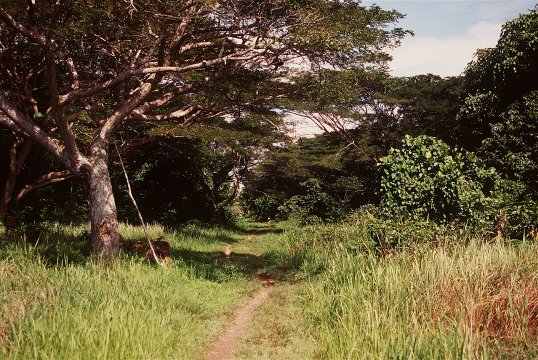 |
| 369. On land the safest way to get around is on your own two feet. The nearest government motor road, the one to Wewak, is still a long way away … six hours walk to the north. |
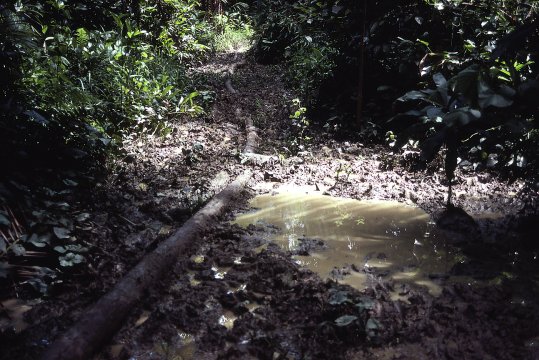 |
| 370. In travelling between villages, people use forest paths most of the time. These are pleasant enough on a dry day, but after heavy rain are difficult to negotiate. |
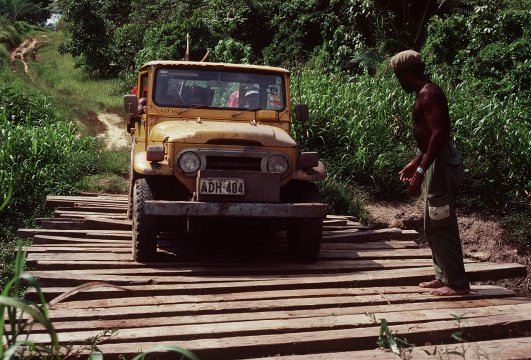 |
| 373. North of the mission, bridges have been built over the creeks, but they are frequently damaged by flooding. |
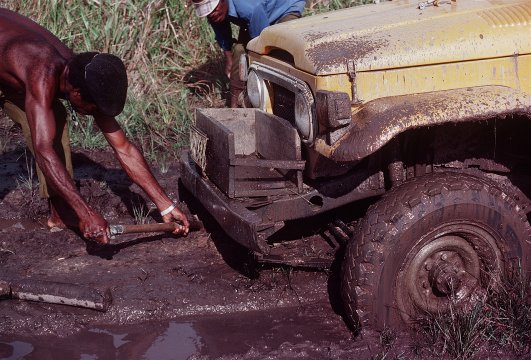 |
| 374. Even between bridges progress can be slow, and it’s easy to understand why the priest uses a tractor on this route, instead of a car! |
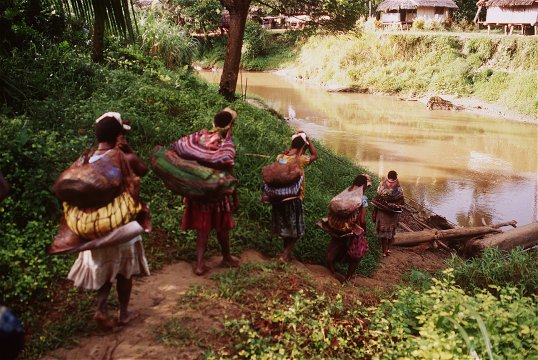 |
| 376. Other logs are placed against the banks at either end – to allow for the changes in water level. In this way, whether the river is high or low, people can easily climb down to the bridge. |
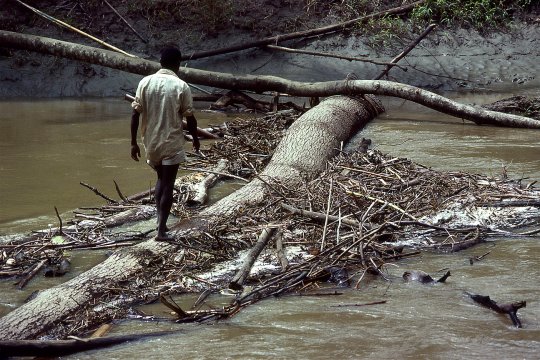 |
| 378. After heavy rain, though, even these bridges seem frightening. Driftwood carried along by the current gets jammed beneath them. Pressure builds up, and the log can be swept away. |
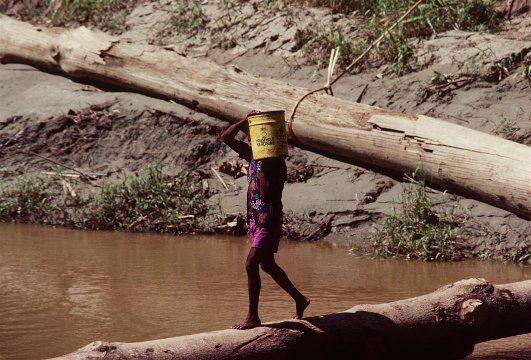 |
| 382. On the return trip it carried supplies for the village stores. These were unloaded in Torembi 3 and carted across the bridge…cans of kerosene for oil lamps, and beer for a party! |

![]()
Text, photos and recordings
by John Tyman
Intended for Educational Use
Only.
Copyright Pitt Rivers Museum,
Oxford University, 2010.
Contact Dr.
John Tyman for more information regarding licensing.
![]()
Photo processing, Web page layout,
formatting, and complementary research by
William Hillman ~ Brandon, Manitoba
~ Canada
www.hillmanweb.com